The Melt - University of Birmingham
Heat, hype, and high footfall. A tired campus café was transformed into a bold, high-energy destination through a vibrant rebrand and expressive interiors — turning heads, driving traffic, and sparking new life in the heart of the University of Birmingham’s on campus experience.
Originally designed in the early 2000’s, The Melt Café had lost its relevance — footfall was falling, the space felt flat, and students were opting for off-campus alternatives. The brief: inject new energy into the café with a bold brand identity and interiors scheme that could compete with high-street food chains and reignite interest with the student crowd.
The process began on site, observing the space, talking to students and staff, and identifying the café’s unrealised potential. The insight was clear: students wanted something fresher, louder, and more attuned to their visual world — something Instagrammable, expressive, and energetic.
Inspired by Zine culture and the chaotic charm of campus life, a vibrant visual identity was built — loud, playful, and full of attitude. The identity mixed food, people, animals, and surreal visuals in a way that felt unexpected, youthful, and distinctly un-corporate. The tone was fun-loving but functional — built to be seen, shared, and remembered.

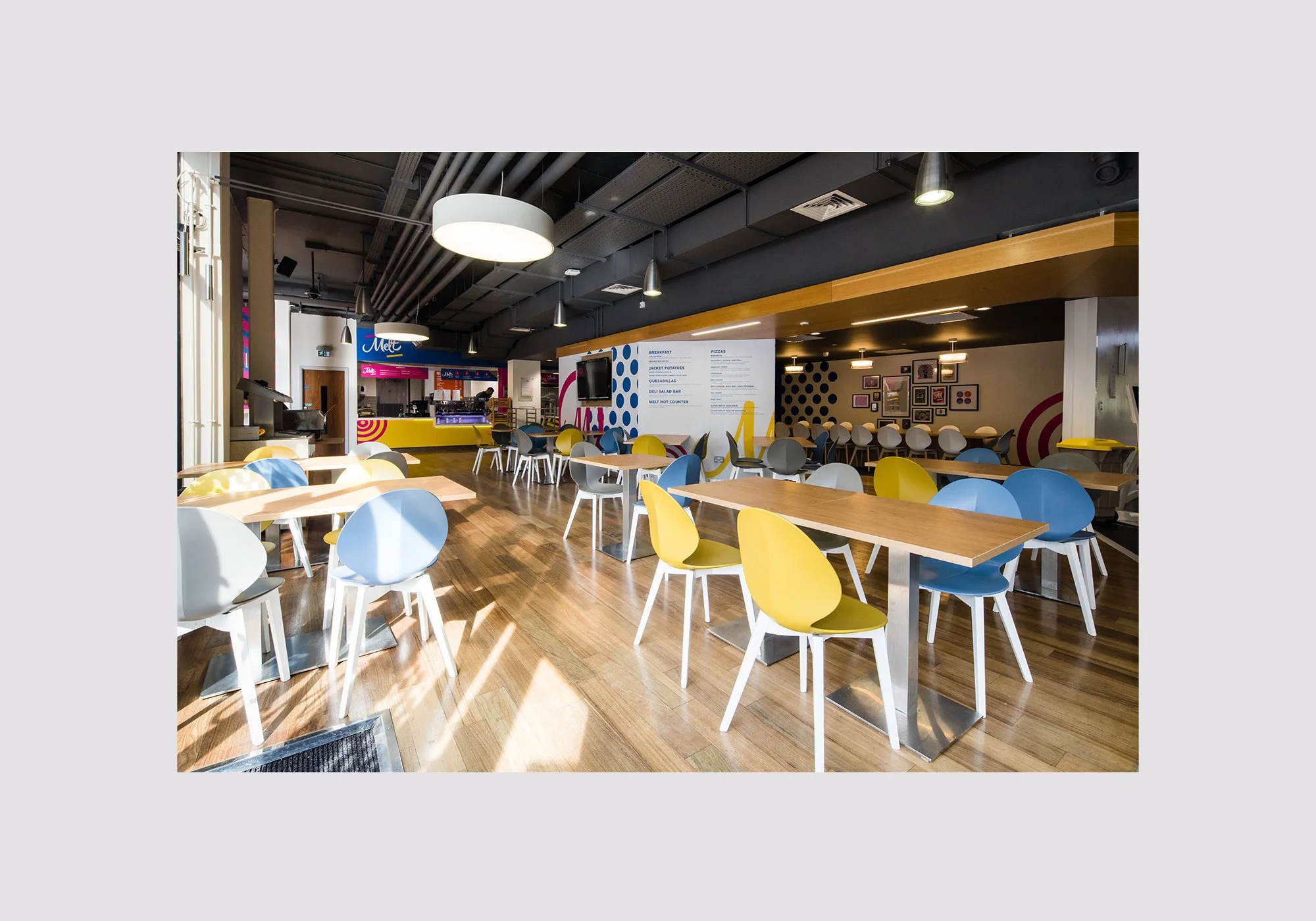


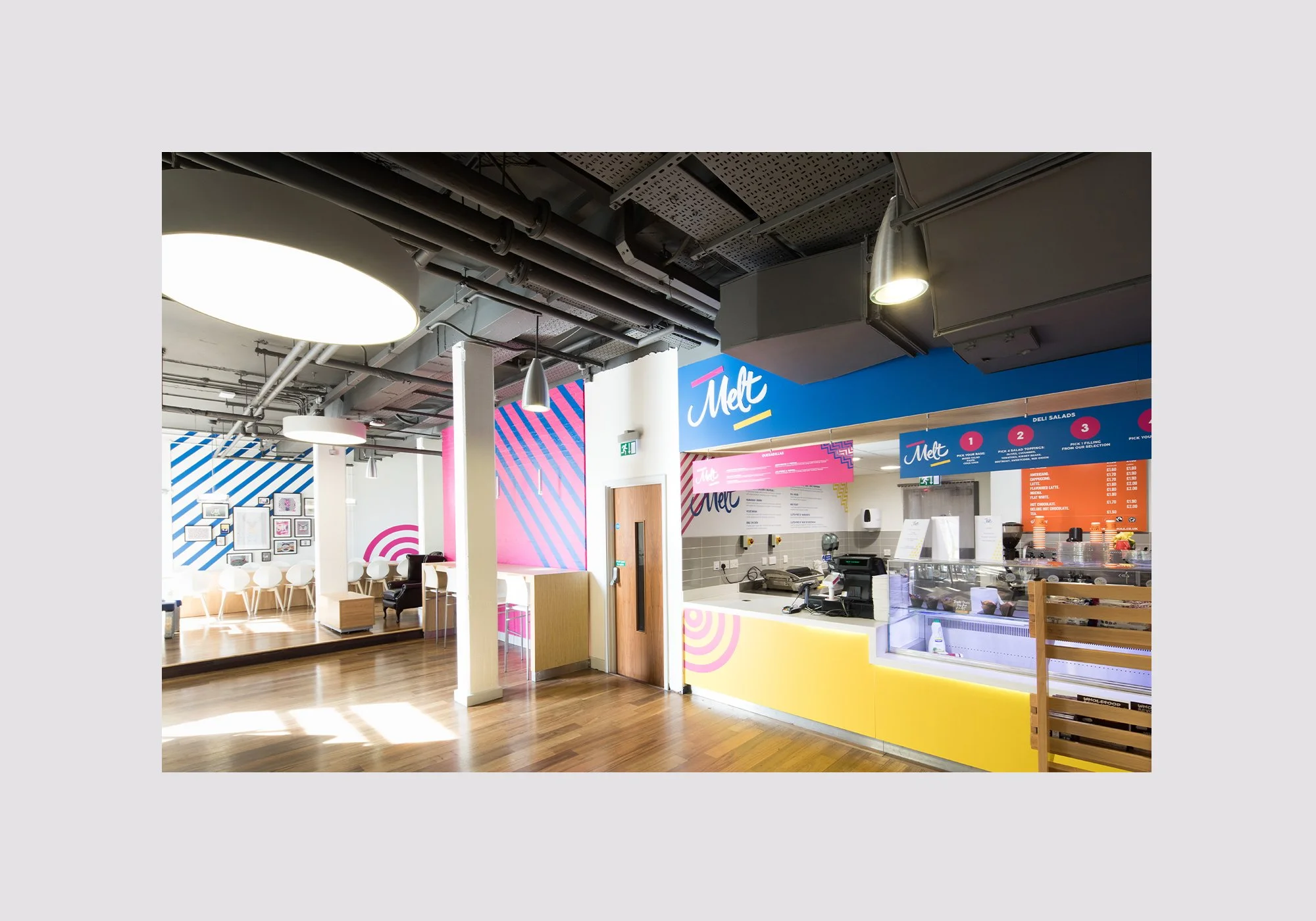
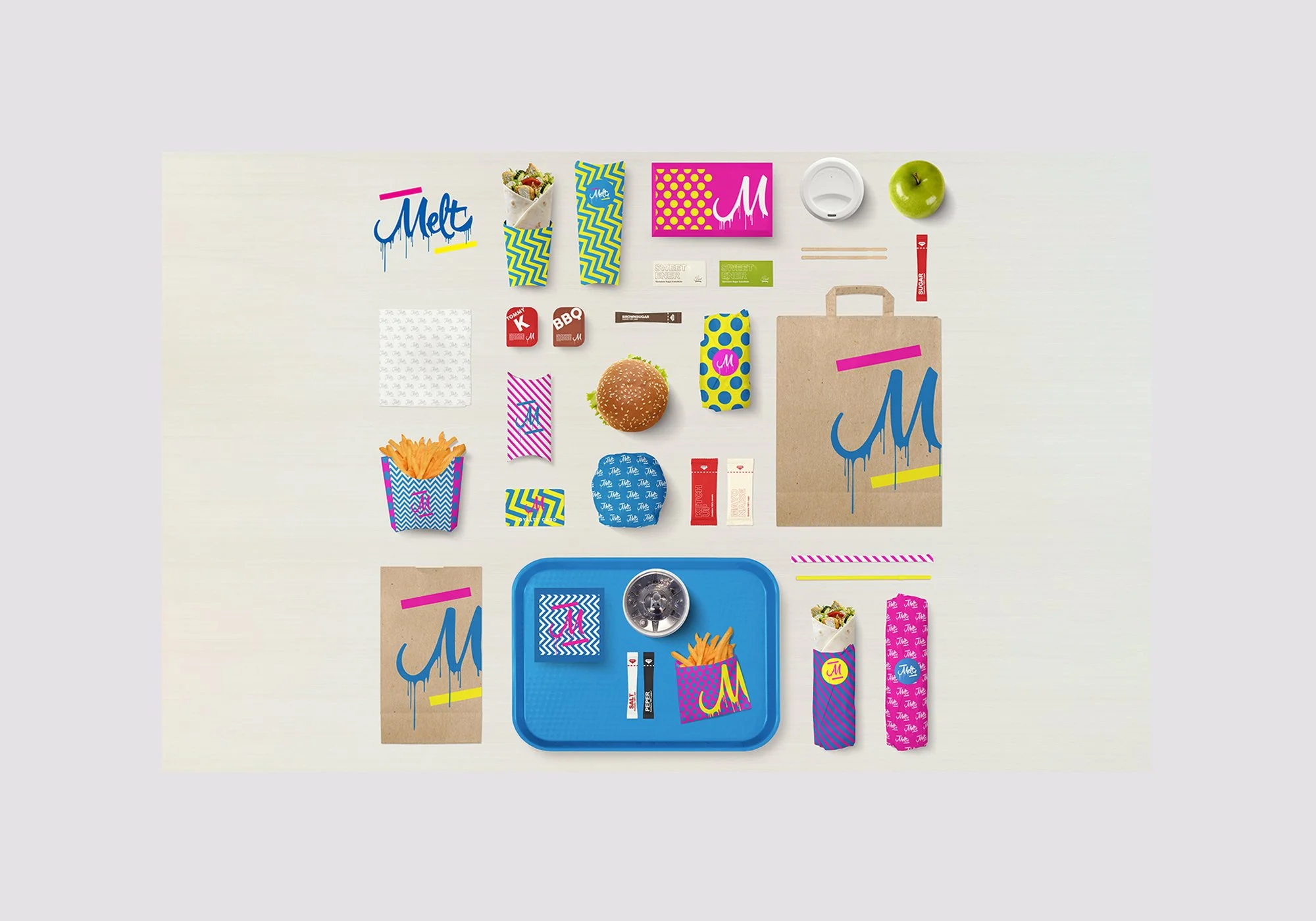
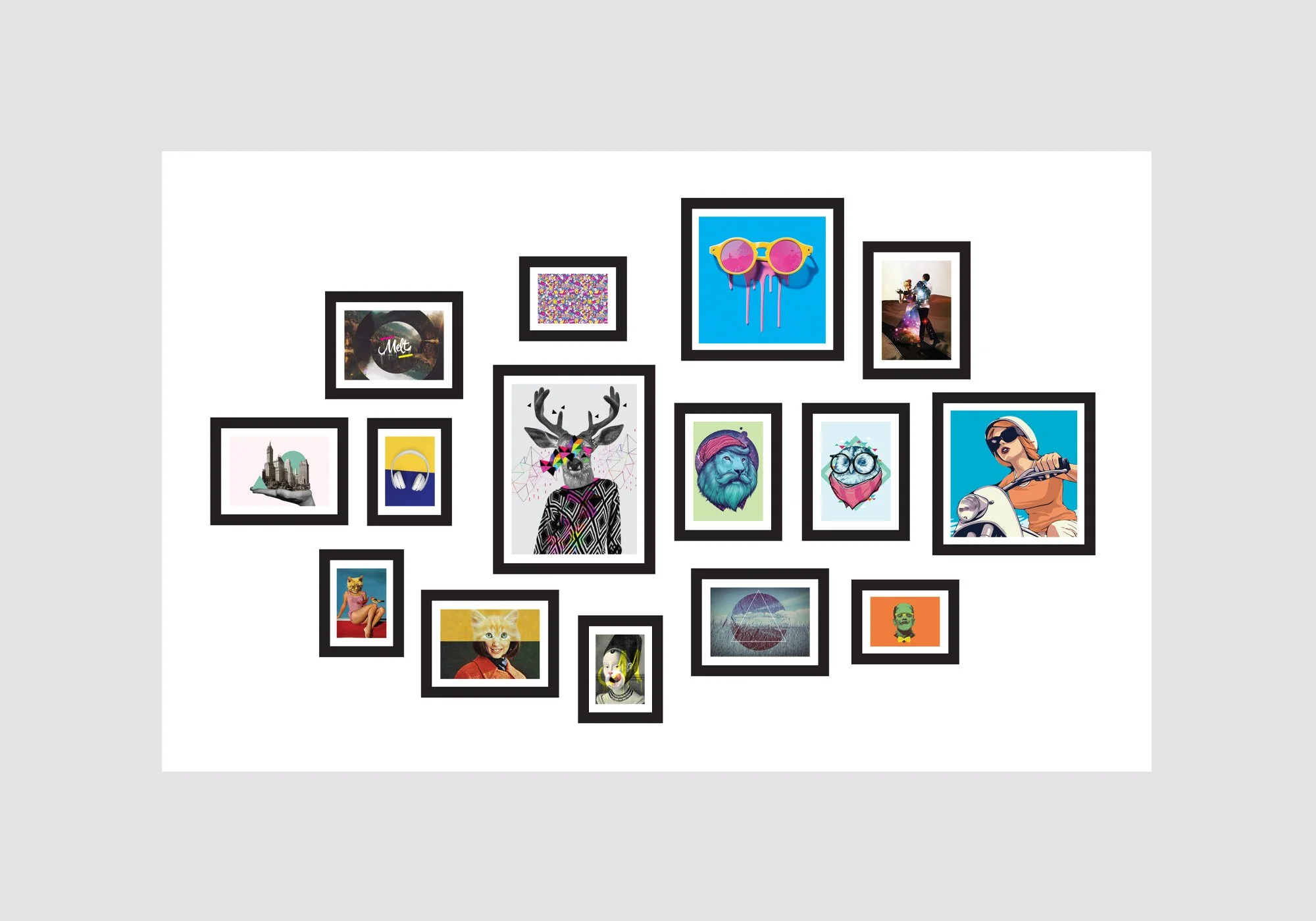

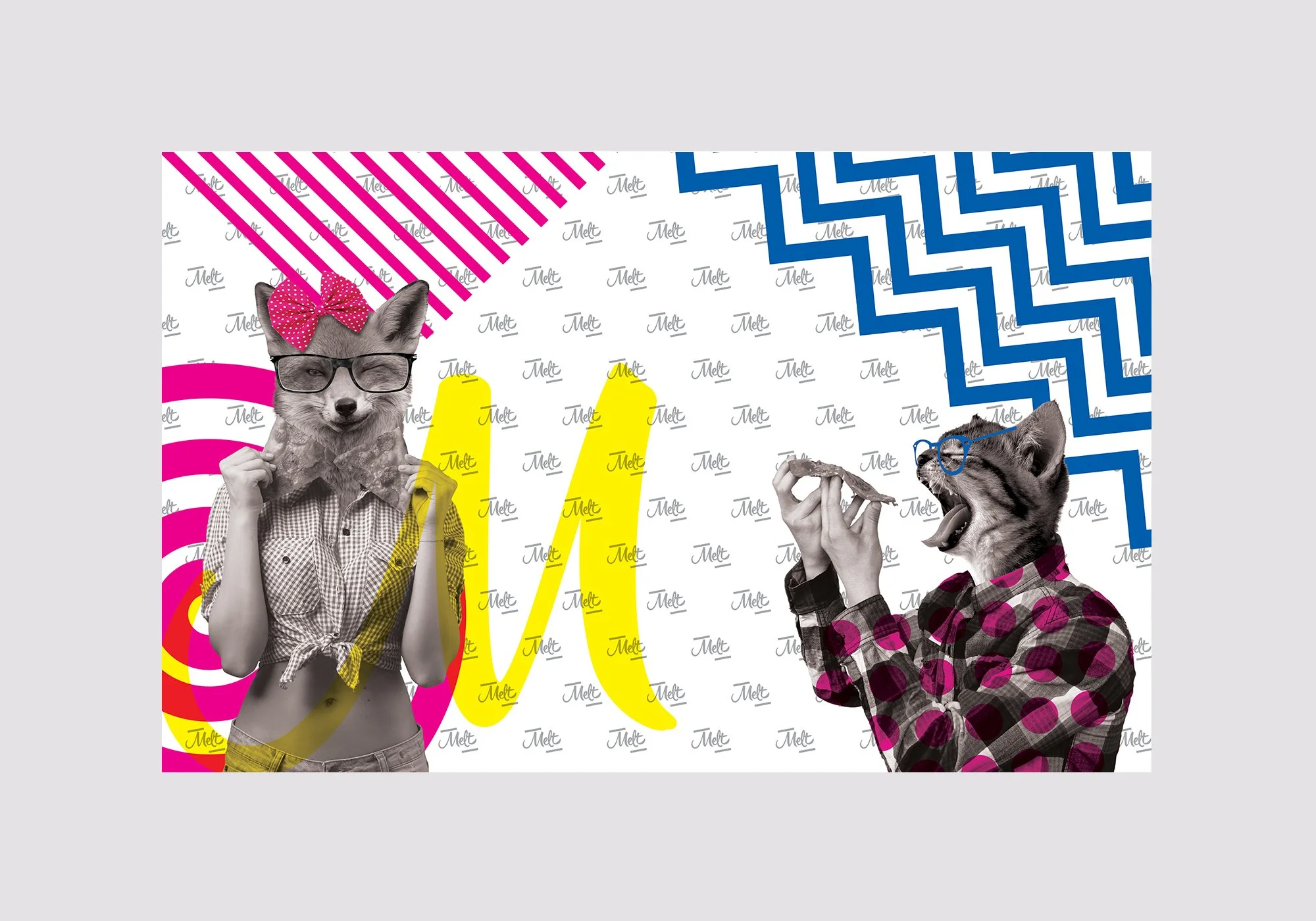

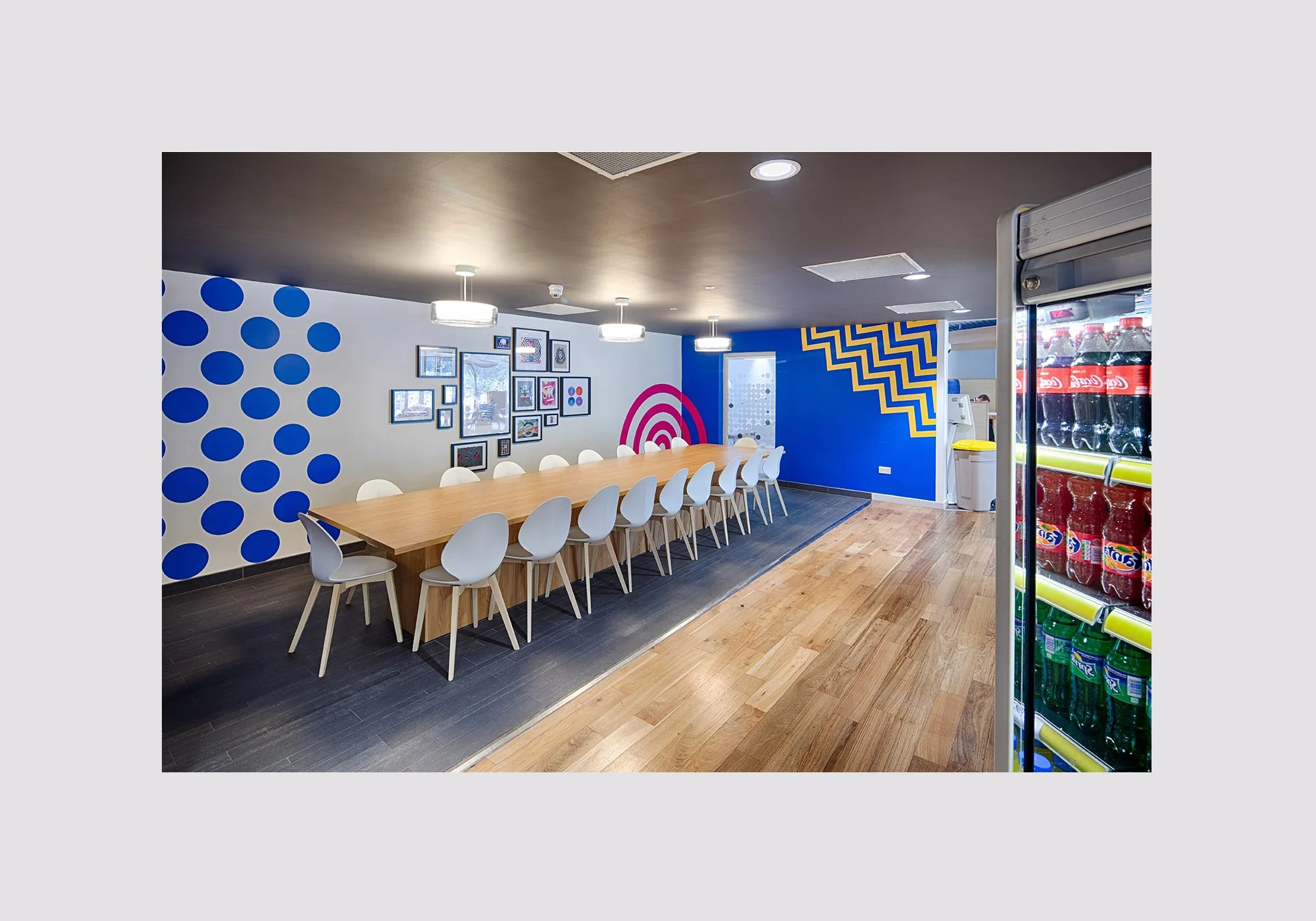


Large-scale feature graphics dominated the space, creating a bold sense of arrival and injecting instant personality. Packaging, curated poster art, glazing manifestation, and custom signage helped round out the brand experience — with every touchpoint working to embed the café as a vibrant, go-to destination. The design went beyond visuals. Clear menu boards, intuitive signage, and zoning graphics helped manage the lunchtime rush — ensuring the space functioned as well as it looked.
The revamped Melt café launched to enthusiastic feedback from students and staff, with measurable increases in footfall and sales. Visually and experientially, it stood apart from every other on-campus outlet — delivering both commercial results and a cultural shift in how the space was perceived.
